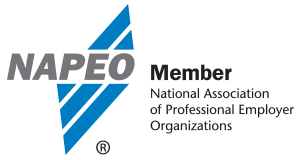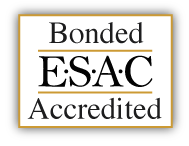How Can a PEO Partner Benefit Your Small to Mid-Sized Business
Research, based on free employee surveys of 132 PEO clients and 44 non-PEO clients, has shown that the average PEO client receives an annual return on investment (cost savings alone) of 27.2%.
What does an ROI of 27.2% mean?
For a business using a PEO, the savings is calculated after the cost of being a client is deducted. Dividing that savings by the cost of doing business yields the return on investment. Savings is calculated based on five categories of HR related expenditures such as:
- HR personnel costs
- Health benefits
- Workers’ compensation
- Unemployment insurance (UI)
- Other external expenditures in areas related directly to HR services (payroll services, benefits, etc.)
An ROI of 27.2 percent means that for every $1,000 spent on PEO services, an average client would save $1,272, yielding a net (cost savings) benefit of $272 for every $1,000 spent. These are averages, which means that half of those businesses surveyed would be expected to have an ROI greater than 27.2 percent, while half would be expected to have an ROI lower than that. This is an ROI based solely on cost savings and does not take into account the important benefit derived from improving client’s ability to attract, motivate, and retain employees and enable them to focus on their core businesses.
What are the advantages of partnering with a PEO, as a Small and Mid-sized Business?
2019 research revealed that organizations who partner with a PEO offer a broader array of benefits to employees and greater access to retirement plans (McBassi & Company September 2019). PEO clients also have significantly higher employee satisfaction rates, as well as lower rates of employee turnover. These companies also grow faster and are much more likely to stay in business than companies not using these services. Furthermore, employees are more likely to describe companies who partner with a PEO as innovative and taking the right steps to be competitive. Additionally, potential PEO clients should consider the following:
- Annual median revenue growth for PEO users was twice that of comparable non-PEO users
- Expected annual median revenue growth for PEO clients is 40 percent greater than that of comparable non PEO users
- PEO client firms were 16 percent more likely to report an increase in profitability
- PEO users are significantly less concerned than non-PEO clients about their ability to handle key challenges such as:
- hiring employees
- increasing revenue
- raising capital/funding
- When asked, 98 percent of business owners who are PEO clients would recommend a PEO to a small business colleague.
What are the advantages of partnering with a PEO, as an Employee?
Compared to employees working in businesses that are not PEO clients, employees working in businesses that are clients are significantly more likely to report that their employer:
- Demonstrates a commitment to them as employees
- Has good hiring practices
- Has good HR policies and practices
- Does a good job of designing employees’ jobs
- Provides employees with good training and development opportunities
In summary, PEOs are good for businesses and their employees. If you are wondering if partnering with a professional employer organization is right for your business, consider the value of these three tasks to your business:
- Improving your ability to attract, motivate and retain employees
- Being able to focus on the core business while someone else handles human resources matters
- Lowering your HR-related expenditures
If you would like to speak with a PEO specialist, contact us today!


